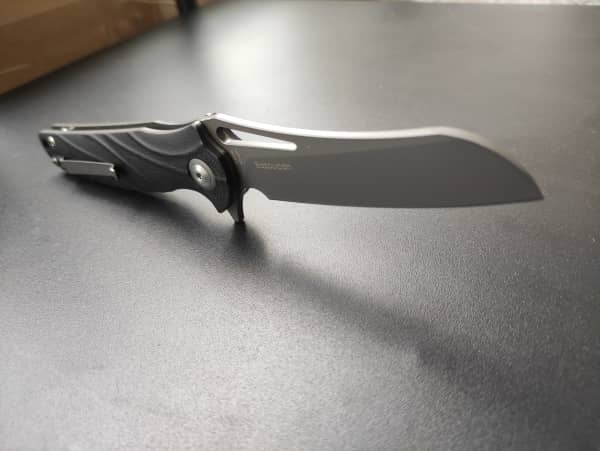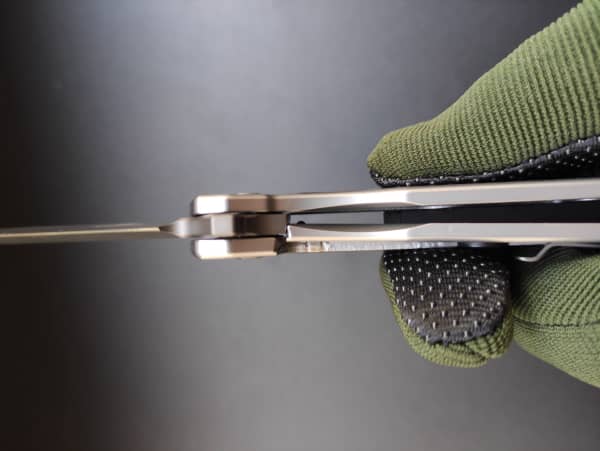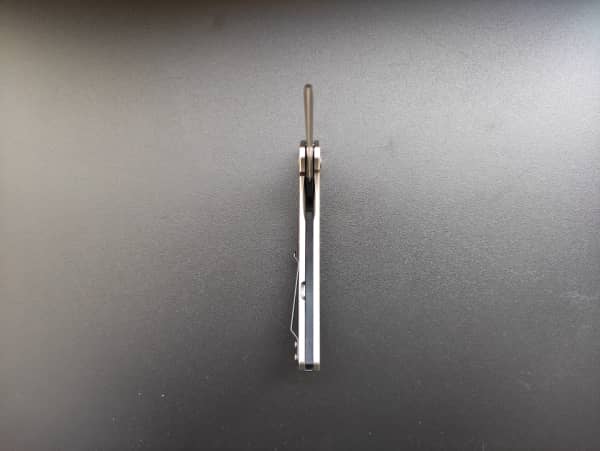ㅏ 포켓 나이프 is a handy tool to have around, but how long does its sharpness last? A lot of it depends on the way you use it. If you’re just using it for general purposes and not doing any heavy-duty cutting, then it can last quite a while.
But if you’re trying to cut through tough materials, the blade will become dull more quickly. In that case, you’ll need to sharpen it more often.
How often you sharpen your pocket knife is one of the most important elements in determining how long it will last.
Pocket knives are often reserved for light work that doesn’t need the strength of a big fixed blade. However, maintaining its viability depends on its continued acuity.
Here, we’ll discuss the optimal sharpness of a pocket knife and how long it should remain that way between sharpenings. Don’t leave until you’ve gotten all the details on your new pocket knife if you’re a beginner.
What is the lifespan of a sharpened knife?
The need to sharpen a knife is proportional to how often it is used. In general, a knife should be sharpened every three to five uses, but more often if you use it frequently.
In addition to getting a dull knife ready for use, sharpening is an important element of knife maintenance. It’s best practice to maintain the blade sharp whether you expect to use the knife tomorrow or in a month’s time.
The answer to the issue of how long knives should be honed is: for as long as they continue to be useful.
After each use, knives should be sharpened before being put away. Whenever you go camping or hunting, be sure to have a whetstone along so you can maintain the edge of your knife.
This is for your own protection as well as for the sake of routine maintenance. No one wants to be stuck in the middle of nowhere with a dull knife.
How to Sharpen a Pocket Knife?
The ability to sharpen a pocket knife is a necessary skill for every knife owner, given the importance of always having a ready blade.
When sharpening knives, there are a lot of structural considerations to keep in mind so that you don’t screw up the bevel, among other things.
Here are some suggestions for honing the blade of your pocket knife.
1. Lubricate the Stone Used for Sharpening
Lubricating the pocket knife is a useful tool to have around, but how long does its sharpness last?
The first step is to apply some water or oil to the sharpening stone to prevent it from drying out. To prevent wear and tear caused by dryness, lubrication is used. The blade might be ruined by the uneven honing that results from such friction.
2. Sharpen One Side at a Time
One side of the blade should be dealt with at a time before moving on to the other. To get a razor-sharp edge while sharpening a knife, the blade has to be slanted at an angle of around 15 degrees.
There might be inconsistencies in the sharpness if you alternate sides with each stroke.
Every inch of the cutting edge has to be sharpened, so be patient and work from one end to the other.
3. Alternate the Sides
As soon as you have made contact with both sides of the blade, it will be time to begin switching between the two sides with each stroke.
It shouldn’t take too much time to accomplish this; around 10 strokes should be plenty. This is just a finishing touch that ensures the edge is level, so it shouldn’t take too much time.
4. Repeat Using Fine Grit
Repeat the steps from the beginning using the side of the sharpening stone that has a finer grit, in order to get the best possible results.
Do it more carefully and slowly this time around since the knife is almost at its sharpest point now.
The removal of a flaw known as the burr, which appears as a result of using a sharpening stone with coarse grit, is the primary objective of this procedure.
This may be recognized by the slightly chipped edge, which has to be polished out before it can be used.
After you have finished the fourth process, your knife will be ready for use or for storage, and you may put it away until the next time you go out camping or hunting.
Why Sharpening a Pocket Knife is Important?
When it’s time to use or store your knife, you should always give it a quick sharpening beforehand. There are a lot of good reasons for this.
The following are examples of some of the more noteworthy ones:
Safety Purposes
There is no comparison between the ease of use and control provided by a sharpened knife and that of a dull one. A well-honed knife may make quick work of any cutting task, requiring little effort on your part.
A dull knife is more dangerous than a sharp one since it increases the risk of cutting oneself. However, you should still be careful while using a knife.
유지
As was noted before, keeping the blade of your pocket knife sharp is an important part of maintaining it.
In particular, it eliminates rust from the blade’s cutting edge, which is subject to the greatest wear and tear.
Because of this, you should always sharpen your knife after using it for strenuous activities, such as skinning an animal.
미학
When the cutting edge of a knife is polished and shines in the sunlight, it makes for a striking visual.
Make sure the edge is razor sharp if you want your pocket knife to be the center of attention whenever you pull it out.
테이크아웃
One of the most convenient things about pocket knives is how compact they are; they’re great to have on hand for those unexpected times when you need a knife. That’s why it’s crucial to always be honing your skills.
Check out our website and have any concerns you may have answered by our staff of knife experts to learn more about knife maintenance and how to guarantee your knife serves you for a very long time.
다음 방법을 통해서도 저희를 팔로우하실 수 있습니다.
https://www.facebook.com/ShieldonCutlery
https://www.instagram.com/shieldon_knives_and_tools/
https://www.youtube.com/channel/UC_Dz–HODWHFY4AaUF0z11Q
https://twitter.com/Shieldonknives1/
https://shieldonknivesandtools.tumblr.com/
https://www.linkedin.com/company/72285346/
https://www.pinterest.com/shieldonknivesandtools/
더 많은 비디오 소개:







